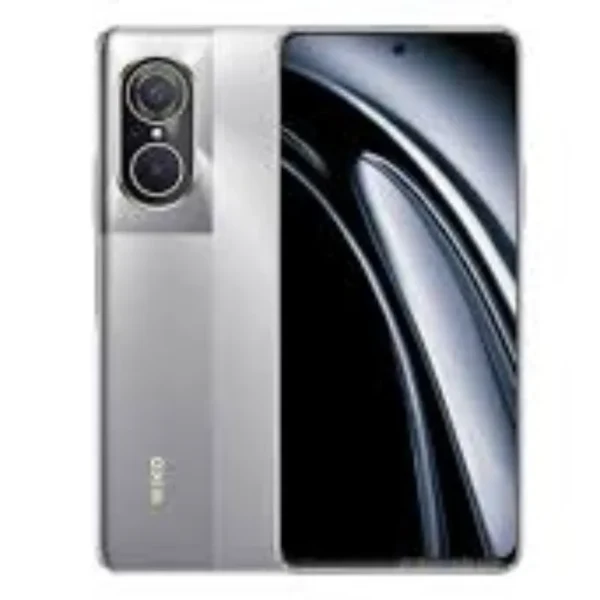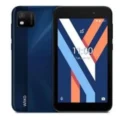Wiko 5G

- : 8GB RAM Snapdragon 695 5G
- : 6.78" 1080x2388 pixels
- : 4000mAh 66W
- : 108MP 1080p
The Wiko 5G is a versatile smartphone that seamlessly combines performance, style, and practicality. Whether you’re a tech enthusiast, a photography lover, or someone who values reliability, the Wiko 5G caters to your needs.
Key Features:
1. Immersive Display
The Wiko 5G boasts a 6.78-inch IPS LCD display with a high resolution of 1080 x 2388 pixels. The 90Hz refresh rate ensures smooth scrolling and responsiveness. Whether you’re streaming videos, browsing social media, or playing games, this large screen enhances your viewing experience.
2. Powerful Performance
Under the hood, the Wiko 5G runs on HarmonyOS and features the Qualcomm Snapdragon 695 5G chipset. The octa-core CPU (2×2.2 GHz Kryo 660 Gold & 6×1.7 GHz Kryo 660 Silver) ensures efficient multitasking and seamless app navigation. Whether you’re juggling apps or enjoying multimedia, the Wiko 5G keeps up effortlessly.
3. Ample Storage
Choose between the 128GB or 256GB internal storage variants. With 8GB of RAM, you’ll have enough space for apps, photos, and videos. Need more room? The microSDXC card slot allows you to expand storage further.
4. Advanced Camera System
Capture stunning moments with the quad rear camera setup:
- 108 MP wide-angle lens (f/1.9) for detailed shots.
- 8 MP ultrawide lens (112˚) for expansive landscapes.
- 2 MP macro lens for close-ups.
- 2 MP depth sensor for artistic effects.
The 16 MP front camera ensures clear selfies and video calls.
5. Long-Lasting Battery
The 4000mAh non-removable battery keeps you connected throughout the day. Whether you’re working, streaming, or exploring apps, the Wiko 5G won’t let you down. And with 66W wired charging, you’ll be back to full power in no time.
6. Connectivity and Extras
- Wi-Fi 802.11 a/b/g/n/ac for fast internet access.
- Bluetooth 5.1 for seamless device pairing.
- GPS, GLONASS, GALILEO, BDS, and QZSS for accurate navigation.
- USB Type-C 2.0 for data transfer and charging.
7. Stylish Colors
Choose from two elegant colors:
- Black
- Silver
Conclusion
The Wiko 5G strikes a balance between performance, aesthetics, and 5G connectivity. Whether you’re a trendsetter or a practical user, this smartphone delivers. Explore the Wiko 5G and elevate your mobile experience!
Specs
Network
| 2G Network GSM 850 / 900 / 1800 / 1900 - SIM 1 & SIM 2 (dual-SIM) CDMA 800 / 1900 |
GSM 850 / 900 / 1800 / 1900 - SIM 1 & SIM 2 CDMA 800 |
| 3G Network |
HSDPA 850 / 900 / 1900 / 2100 CDMA2000 1x |
| 4G Network |
LTE (unspecified) |
| 5G Network |
SA/NSA |
| Speed |
HSPA, LTE, 5G |
LAUNCH
| Announced | December, 2025 |
| Status |
Available. Released 2022, December 27 |
BODY
| Dimensions | 164.6 x 75.6 x 7.9 mm (6.48 x 2.98 x 0.31 in) |
| Weight | 191 g (6.74 oz) |
| SIMs SIM (Subscriber Identity Module) is a small card that contains mobile network subscriber's account information. This allows the phone using the card to attach to a mobile network. The SIM card is most commonly associated with GSM and UMTS mobile networks. Moving a SIM card from one phone to another allows a subscriber to switch mobile phones without having to contact their mobile network carrier. SIM cards can also be used by a phone to store limited amounts of data, such as phone numbers and text messages. |
Dual SIM (Nano-SIM, dual stand-by) Splash resistant |
Display
| Display Type Display Technology => A number of display technologies and types used in mobile phones => TFT (Thin Film Transistor), IPS (In-Place Switching), OLED (Organic Light Emitting Diode), AMOLED (Active-Matrix Organic Light-Emitting Diode), Super AMOLED (an even advanced version of AMOLED), Resistive Touchscreen (Resistive touchscreens contain two layer of conductive material with a very small gap between them which acts as a resistance), Capacitive Touchsceen (Capacitive touchscreen technology consists of a layer of glass coated with a transparent conductor) | IPS LCD, 120Hz |
| Size | 6.78 inches, 111.4 cm2 (~89.5% screen-to-body ratio) |
| Resolution | 1080 x 2388 pixels (~387 ppi density) |
PLATFORM
| Operating System OS => Every computer system run on a base software called Operating System (OS). Operating System controls all basic operations of the computer (such as smartphone, PDAs, tablet computers and other handheld devices). The Operating System allows the user to install and run third party applications (apps), apps are used to add new functionality to the device. | HarmonyOS |
| Chipset Chipset is a group of integrated circuits designed to perform one or a more dedicated functions, often with real time computing constraints, Popular smartphones are equipped with more advanced embedded chipsets that can do many different tasks depending on their programming. | Qualcomm SM6375 Snapdragon 695 5G (6 nm) |
| CPU CPU (Central Processing Unit) mostly known as processors, CPU processes instructions in order to carry out certain functions that make your device operate properly. Processors are often described as the brain of computers, smartphones and tablets, Smartphones and tablets rely on processors to carry out their every task, Processors are an incredibly important factor in selecting any type of computing device, including your smartphone. | Octa-core (2x2.2 GHz Kryo 660 Gold & 6x1.7 GHz Kryo 660 Silver) |
| GPU GPU (Graphics Processing Unit) is a single-chip processor designed to rapidly manipulate and alter memory to accelerate the creation of images in a frame buffer intended for output to a display, This includes things such as lighting effects, object transformations, and 3D motion. | Adreno 619 |
MEMORY
| Card Slot Memory Card Slot is a special slot for inserting a memory card. Memory cards allow you to expand the phone's built-in memory, A memory card (sometimes called a flash memory card or a storage card) is a small storage medium used to store data such as text, pictures, audio, and video, for use on small, portable or remote computing devices such as mobile phones, mp3 players, digital cameras. | No |
| Internal | 128GB 8GB RAM, 256GB 8GB RAM UFS 2.2 |
MAIN CAMERA
| Cameras Specs Today’s smartphones come equipped with a very comprehensive set of camera related specifications. Our smartphone, for many of us, has become our primary camera due to it being the one we always have with us. |
108 MP, f/1.9, (wide), 1/1.52", 0.7µm, PDAF 8 MP, f/2.2, 112˚ (ultrawide) 2 MP, f/2.4, (macro) 2 MP, f/2.4, (depth) |
| Video | 1080p@30fps, gyro-EIS |
| Camera Features |
LED flash, HDR, panorama |
SELFIE CAMERA
| Cameras Specs Today’s smartphones come equipped with a very comprehensive set of camera related specifications. Our smartphone, for many of us, has become our primary camera due to it being the one we always have with us. |
16 MP, f/2.2, 22mm (wide) |
| Video | 1080p@30fps |
SOUND
| Loudspeaker | Yes |
| 3.5mm jack |
No |
COMMS
| WLAN |
Wi-Fi 802.11 a/b/g/n/ac, dual-band, Wi-Fi Direct |
| Positioning |
GPS, GLONASS, GALILEO, BDS, QZSS |
| Bluetooth Bluetooth is a wireless communications technology for exchanging data between mobile phones, headsets, computers and other network devices over short distances without wires, Bluetooth technology was primarily designed to support simple wireless networking of personal consumer devices. | 5.1, A2DP, LE |
| Infrared Infrared connectivity is an old wireless technology used to connect two electronic devices. It uses a beam of infrared light to transmit information and so requires direct line of sight and operates only at close range. | |
| USB | USB Type-C 2.0, OTG |
| NFC NFC (Near field communication) is a set of standards for smartphones and similar devices to establish peer-to-peer radio communications with each other by touching them together or bringing them into proximity, usually no more than a few inches. | |
| Radio |
Features
| Sensors Sensors are electronic components that detects and responds to some type of input from the physical environment. The specific input could be light, heat, motion, moisture, pressure and location, The output is generally a signal that is converted to use in computing systems, a location sensor, such as a GPS receiver is able to detect current location of your electronic device. |
Fingerprint (side-mounted), accelerometer, compass Virtual proximity sensing |
BATTERY
| Battery Type Battery Type => Cell phones run on various kinds of batteries depending on the manufacturer, phone size or shape and features. There are basically four types of cell phone batteries => Lithium Polymer, Lithium Ion, Nickel Metal Hydride and Nickel Cadmium. | Li-Poly (Lithium Polymer) |
| Capacity Battery Capacity is a measure (typically in Amp-hr) of the charge stored by the battery, and is determined by the mass of active material contained in the battery. The battery capacity represents the maximum amount of energy that can be extracted from the battery under certain conditions. | 4000 mAh |
| Placement | non-removable |
| Charging The functionality responsible for recharging batteries in portable devices, such as mobile phones, significantly influences both battery lifespan and the practicality of daily product usage.The charging process, encompassing factors like voltage, current, and completion actions, is contingent upon the battery's size and type.Contemporary battery chargers dynamically adjust charging parameters based on the battery's current charging state. Charging an empty battery poses no safety risk, allowing for a quicker charging process. Consequently, many charging speed benchmarks, including ours, specify the battery level achieved after a 30-minute session on an empty battery.Standard chargers with a power output of 5V/1A, equivalent to 5W, serve as a baseline, with anything surpassing this speed classified as quick or fast charging. | 66W wired, 60% in 15 min, 100% in 35 min (advertised) 5W reverse wired |
MISC
| Colors |
Black, Silver |
| Price |
About 270 EUR |
TESTS
Reviews
Disclaimer Note
We strive to maintain accurate and up-to-date content on our website for general information purposes only. Please refrain from using the material for business, legal, or any other decisions.



















